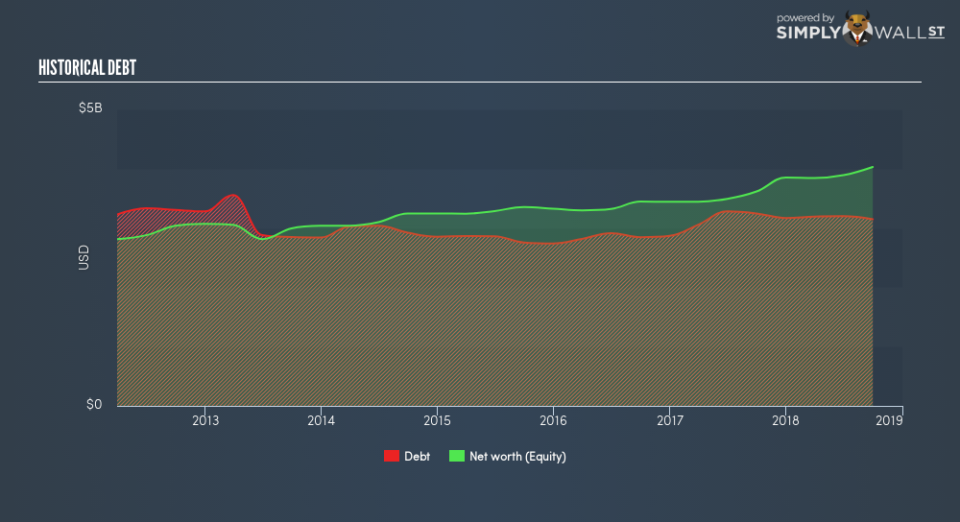Is OGE Energy Corp. (NYSE:OGE) A Financially Sound Company?

Small-caps and large-caps are wildly popular among investors; however, mid-cap stocks, such as OGE Energy Corp. (NYSE:OGE) with a market-capitalization of US$7.8b, rarely draw their attention. However, generally ignored mid-caps have historically delivered better risk adjusted returns than both of those groups. This article will examine OGE’s financial liquidity and debt levels to get an idea of whether the company can deal with cyclical downturns and maintain funds to accommodate strategic spending for future growth. Note that this information is centred entirely on financial health and is a top-level understanding, so I encourage you to look further into OGE here.
View our latest analysis for OGE Energy
Want to help shape the future of investing tools and platforms? Take the survey and be part of one of the most advanced studies of stock market investors to date.
How does OGE’s operating cash flow stack up against its debt?
OGE’s debt level has been constant at around US$3.1b over the previous year including long-term debt. At this constant level of debt, the current cash and short-term investment levels stands at US$91m , ready to deploy into the business. Additionally, OGE has generated cash from operations of US$1.0b during the same period of time, resulting in an operating cash to total debt ratio of 33%, signalling that OGE’s debt is appropriately covered by operating cash. This ratio can also be interpreted as a measure of efficiency as an alternative to return on assets. In OGE’s case, it is able to generate 0.33x cash from its debt capital.
Can OGE pay its short-term liabilities?
At the current liabilities level of US$841m, it appears that the company may not be able to easily meet these obligations given the level of current assets of US$642m, with a current ratio of 0.76x.
Can OGE service its debt comfortably?
With a debt-to-equity ratio of 78%, OGE can be considered as an above-average leveraged company. This is not unusual for mid-caps as debt tends to be a cheaper and faster source of funding for some businesses. We can check to see whether OGE is able to meet its debt obligations by looking at the net interest coverage ratio. A company generating earnings before interest and tax (EBIT) at least three times its net interest payments is considered financially sound. In OGE’s, case, the ratio of 2.96x suggests that interest is not strongly covered, which means that lenders may refuse to lend the company more money, as it is seen as too risky in terms of default.
Next Steps:
OGE’s high cash coverage means that, although its debt levels are high, the company is able to utilise its borrowings efficiently in order to generate cash flow. But, its low liquidity raises concerns over whether current asset management practices are properly implemented for the mid-cap. I admit this is a fairly basic analysis for OGE’s financial health. Other important fundamentals need to be considered alongside. You should continue to research OGE Energy to get a more holistic view of the stock by looking at:
Future Outlook: What are well-informed industry analysts predicting for OGE’s future growth? Take a look at our free research report of analyst consensus for OGE’s outlook.
Historical Performance: What has OGE’s returns been like over the past? Go into more detail in the past track record analysis and take a look at the free visual representations of our analysis for more clarity.
Other High-Performing Stocks: Are there other stocks that provide better prospects with proven track records? Explore our free list of these great stocks here.
To help readers see past the short term volatility of the financial market, we aim to bring you a long-term focused research analysis purely driven by fundamental data. Note that our analysis does not factor in the latest price-sensitive company announcements.
The author is an independent contributor and at the time of publication had no position in the stocks mentioned. For errors that warrant correction please contact the editor at editorial-team@simplywallst.com.

